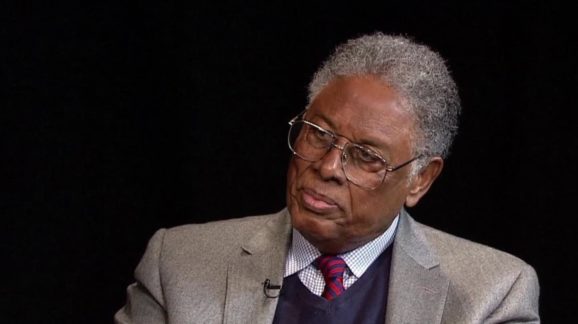Wisdom on the Interest-Rate Price Control Folly from John Stuart Mill to Thomas Sowell

Photo Credit: Getty
Today, the Senate held a hearing entitled, “Protecting Americans from Debt Traps by Extending the Military’s 36% Interest Rate Cap to Everyone.” But the “traps” from which Americans really need protection are economic fallacies such as price controls, which limit their opportunities when put into legislation. Fortunately, economists past and present can provide that protection when their wisdom is heeded.
At today’s hearing, members of Congress weighed the merits of a bill that will cap interest on most consumer loans at an annual percentage rate of 36 percent. The bill, the Veterans and Consumers Fair Credit Act, is unfair to American consumers who seek credit options for urgent needs or to improve their lives.
Prominent economists have long been saying that interest-rate caps, like all price controls, limit options for consumer. Their assessment is based on their observations of human nature, and the hard knocks of life that some of them endured themselves.
John Stuart Mill held positions that are still universally hailed as progressive for the time. He authored the early feminist tome The Subjection of Women and was the second member of British Parliament to call for women’s suffrage. He was also an early opponent of slavery.
As an advocate of personal liberty, Mill viewed usury laws, which either outlawed the charging of interest for loans or set a maximum interest rate, as violating the rights of consenting adults to enter freely into transactions. In his 1848 book Principles of Political Economy, Mill called laws restricting interest rates “mischievous interferences with the spontaneous course of industrial transactions.”
Mill explained why price controls on interest rates would result in supply not meeting demand and in less credit being available than what consumers desired. He wrote:
If the competition for borrowers, left unrestrained, would raise the rate of interest to six percent, this proves that at five there would be a greater demand for loans than there is capital in the market to supply. If the law in these circumstances permits no interest beyond five percent, there will be some lenders who … content themselves with the legal rate, but others, finding that in a season of pressing demand more may be made of their capital by other means than they are permitted to make by lending it, will not lend it at all.
Many borrowers would not be able to obtain credit that they needed or wanted, unless they subjected themselves to the vagaries of the illegal market.
Mill called interest rate controls “demoralizing” and detrimental to the welfare of rational adult consumers.
What can be more unjust than that a person who cannot give perfectly good security should be prevented from borrowing of persons who are willing to lend money to him, by their not being able to receive the rate of interest which would be a just equivalent of their risk?
Through the mistaken kindness of the law, he must go without the money which is perhaps necessary to save him from much greater losses, or be driven to expedients of a far more ruinous description, which the law either has not found it possible, or has not happened, to interdict.
More than 160 years after Mill wrote those powerful passages, Thomas Sowell, who criticized politicians’ misguided “good intentions,” laid out his own strong critique of interest rate controls. He is now subject of the acclaimed documentary “Common Sense in a Senseless World,” and he does not mince words in castigating politicians who think they know better than individuals involved in a transaction what interest rate is “just.”
Sowell writes:
Is it worth paying the $45 to get the $300 right now, rather than wait a couple of weeks for your check to arrive? No third party can know that. But taking decisions out of the hands of those most directly affected is one of the central patterns of the political left that make them dangerous to the very people they think they are helping.
He also points out the folly of applying annual percentage rates (APR) to short-term loans, as the interest-rate cap bill debated at the Senate hearing does. Dissecting an article that calculated a 460 percent APR for a $45 interest charge on a two-week $300 loan, Sowell observes:
You don’t need higher math to figure out that $45 is 15 percent of $300. How did we get to 460 percent? Very simple: By distorting the actual conditions of most payday loans.
Sowell then makes this comparison to illustrate the absurdity of both requiring disclosure of, and basing an interest rate cap on, an annualized interest rate for loans that only have the duration of a few weeks.
Using this kind of reasoning—or lack of reasoning—you could quote the price of salmon as $15,000 a ton or say a hotel room rents for $36,000 a year, when no consumer buys a ton of salmon and few people stay in a hotel room all year.
Sowell is quoted on this point on a recent CEI paper Matthew Adams and I wrote advocating against interest-rate price controls and for reforms to the Truth in Lending Act for more appropriate measures of interest rate to be utilized for disclosure of terms of a short-term loan. We can only hope the timeless wisdom of Mill and Sowell will prevail and that, in Mill’s words, politicians’ “mistaken kindness” does not deprive consumers of options and leave them with “expedients of a far more ruinous description.”
CEI Research Associate Guy Denton contributed to this post.